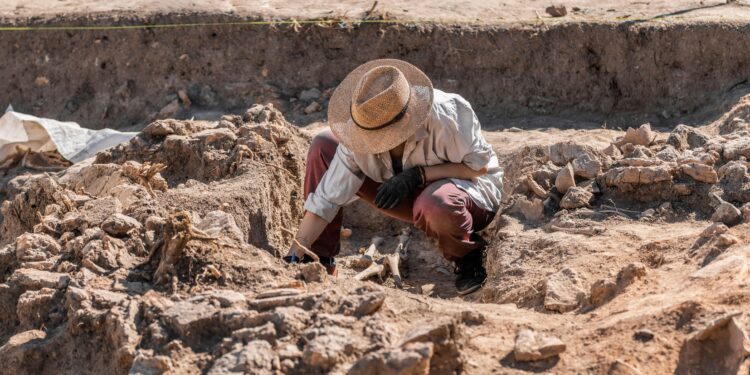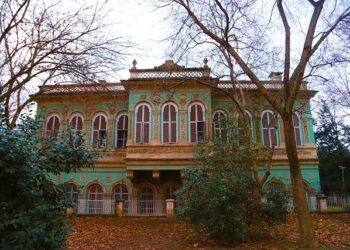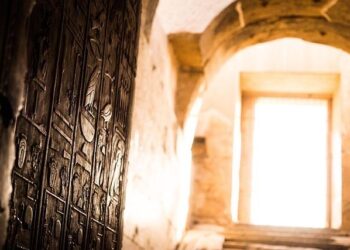Uncovering Ancient Roman Aqueducts in Belgium
An intriguing archaeological finding in Belgium has revealed remarkably preserved wooden aqueducts that trace back to the era of the Roman Empire, over two millennia ago. This significant find not only highlights the engineering prowess of ancient Rome but also enhances our understanding of daily life during that period. As researchers investigate these past conduits, they offer insights into the elegant infrastructure that supported communities within this area and its vital role within the broader context of the Roman Empire.
Exploring Roman Engineering Innovations in Belgium
Recent digs have uncovered an exceptional instance of Roman engineering: intricately crafted wooden aqueducts located near Namur. These artifacts showcase a profound understanding of hydraulic systems and urban planning by the Romans. Dating back to around the 1st century AD, these structures were crucial for supplying fresh water to public baths and private homes, significantly enhancing living standards for residents at that time. The excellent state of preservation suggests favorable burial conditions have protected them from decay over centuries.
The wooden pipes were constructed from local timber and demonstrate advanced building techniques worthy of further exploration regarding their distribution across Europe. Key features noted by archaeologists include:
- Joint Construction: A design allowing flexibility while ensuring strength.
- Aquatic Flow Efficiency: Engineered to take advantage of natural land slopes for effective drainage.
- Sustainable Material Selection: Choices made with minimal environmental impact based on regional climate considerations.
This discovery not only deepens our knowledge about technological advancements during Roman times but also underscores how much history lies beneath Belgian soil waiting to be uncovered. Ongoing studies are anticipated to provide further insights into how ancient Romans lived and thrived through such innovations.
Examining Ancient Water Management Techniques in Rome
The discovery of these wooden aqueducts presents a rare chance to delve into the complex water management systems devised by Romans. Their engineering skills extended beyond mere construction; they focused on creating sustainable solutions for urban hydration needs as cities grew rapidly. Notable aspects characterizing their approach included:
- Aqueduct Systems: Elevated structures designed for gravity-fed transportation from distant sources.
- Civic Fountains: Public access points promoting hygiene practices and community engagement.
- Sewage Disposal Systems: Advanced methods ensuring proper waste management contributing positively towards public health standards.
- Piping Networks (Lead & Wood): Innovative techniques utilized for efficient urban distribution networks showcasing ingenuity in resource utilization.
The analysis indicates these wooden conduits were fashioned using locally sourced timber, reflecting both ingenuity and an awareness of environmental factors affecting material durability.Current research suggests maintenance practices employed by Romans ensured system longevity, highlighting their commitment towards sustaining essential infrastructure.
| Component | Function | Importance |
|---|---|---|
| Aqueduct | Water transport | Catalyst for urban development |
| Public Fountain | Citizen access point | Promoted public health |
| Sewage System | waste management | >Enhanced sanitation standards |
| Piping Systems |
Protecting Historical Artifacts: Strategies for Future Archaeological Endeavors
The revelation surrounding ancient wooden aqueducts emphasizes a pressing need within archaeology: safeguarding such invaluable artifacts is crucial as new discoveries arise.Create stringent protocolsfor handling newly unearthed items is essential; this includes implementing<strong environmental controlsto maintain optimal storage conditions focusing on temperature regulation humidity levels light exposure safeguarding organic materials against degradation.
An educational outreach component will be vital too—engaging local communities stakeholders future scholars through<strong interactive workshopsand exhibitions can cultivate gratitude towards archaeological heritage.Additionally,< strong leveraging technology like 3D scanning digital archiving can facilitate virtual documentation making findings accessible without physical contact.A comprehensive strategy merging conservation science community engagement will bolster preservation efforts ensuring treasures like those discovered remain cherished legacies passed down generations ahead.
















